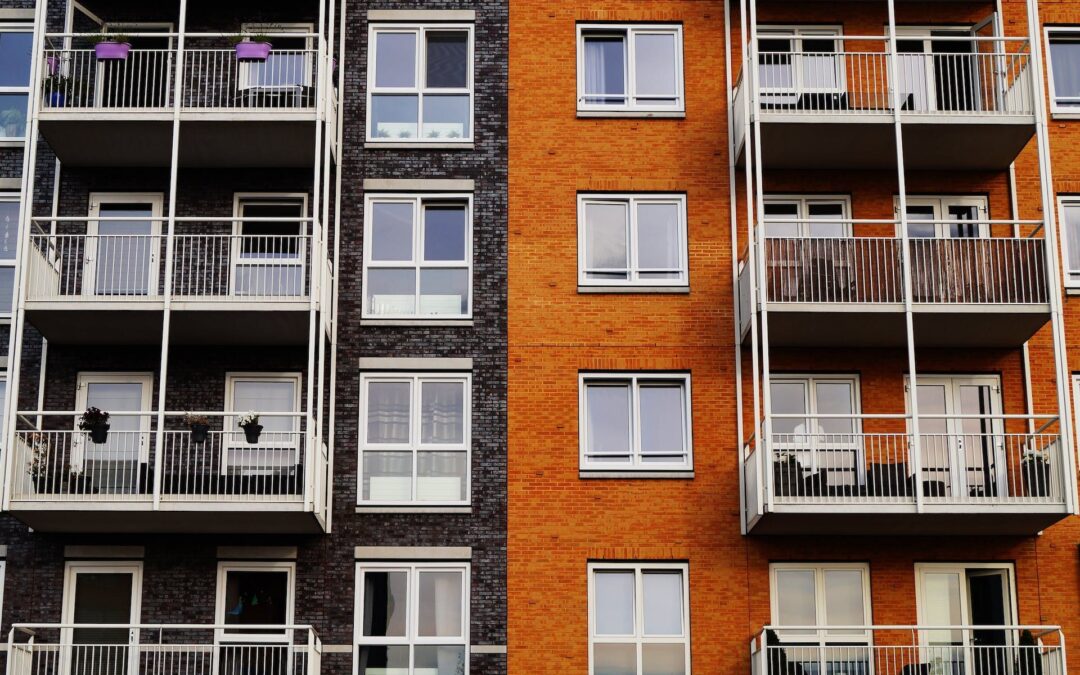The demand for efficient and sustainable HVAC solutions in multi-residential buildings is more critical than ever. An innovative technology that has gained prominence in recent years is the air-cooled variable refrigerant flow (VRF) system. This cutting-edge HVAC solution has proven to be a game-changer, offering many benefits for developers, building owners, and occupants alike!
Air-cooled VRF systems, a type of heat pump technology, provide simultaneous heating and cooling capabilities through the use of a single outdoor unit connected to multiple indoor units. Here’s how it all works:
- The system begins with an outdoor unit, which houses a compressor(s) that are responsible for pumping refrigerant through the system
- The refrigerant, a fluid with excellent heat transfer properties, circulates between the outdoor unit and multiple indoor units located in different zones or rooms within the building
- The system allows for individualized control of each indoor unit, creating zones that can be heated or cooled independently
- The refrigerant extracts heat from the outdoor air and transfers it indoors when heating is required and removes heat from the indoor air and releases it outdoors during cooling
Here are some of the benefits they offer:
1. Flexibility in Design
Multi-residential buildings often come with diverse layouts and space requirements. Air-cooled VRF systems offer unparalleled flexibility in design, as they eliminate the need for extensive ductwork. The absence of extra ducts saves valuable space and allows for more creative and efficient interior design solutions. This adaptability is crucial for architects and developers looking to maximize usable space while maintaining aesthetic appeal.
2. Quick Installation & Scalability
The installation process for air-cooled VRF systems is generally quicker and less disruptive compared to traditional HVAC systems. This is particularly advantageous for multi-residential buildings where minimizing construction time is crucial. Additionally, the scalability of VRF systems makes them ideal for projects of varying sizes, allowing developers to tailor the HVAC solution to the specific needs of each building.
3. Smart Control & Redundancy Capabilities
Air-cooled VRF systems can work with smart building technologies. Residents can control their HVAC settings remotely through smartphones or other devices, promoting energy conservation and providing added convenience. Building managers can also make use of monitoring and control features, optimizing the overall performance of the system. Built-in redundancy features even ensure that other units continue to operate in the event of a failure in one part of the system which provides unmatched reliability.
4. Occupancy Monitoring & Demand Response
Some advanced air-cooled VRF systems can integrate with occupancy sensors and demand response programs. This enables the HVAC system to adjust its operation based on the real-time occupancy of different zones within the building. This level of automation not only improves energy efficiency but also aligns with smart grid initiatives.
5. Adaptive Defrosting
In the colder months, where some HVAC systems might struggle with frost buildup on outdoor units, air-cooled VRF systems often feature adaptive defrosting capabilities. This intelligent defrosting mechanism ensures efficient operation even in suboptimal winter weather conditions and enhances the system’s overall performance and reliability.
6. Environmental Sustainability
With an increasing focus on environmental sustainability, air-cooled VRF systems stand out as an eco-friendly HVAC solution. The precise control of temperature and energy efficiency reduces greenhouse gas emissions, making them a greener alternative to traditional HVAC systems. Additionally, many VRF systems use environmentally friendly refrigerants that have lower global warming potential, aligning with modern sustainability goals.
7. Increased Cost Savings
Put simply, these systems optimize energy consumption. Since only the necessary areas are conditioned at any given time, this minimizes energy waste and reduces utility costs. These systems also offer quiet operation, ensuring minimal disturbance, because very little energy is lost to sound. Over the long term, air-cooled VRF systems can lead to substantial savings, while the elimination of ductwork and simplified installation reduces upfront construction costs.
As urban areas continue to grow, the demand for innovative solutions that prioritize efficiency, comfort, and sustainability will only intensify. Air-cooled VRF systems not only meet these demands but also set a new standard for the future of multi-residential HVAC technology. Developers, building owners, and occupants alike can all benefit from the numerous advantages offered by this state-of-the-art HVAC solution!
Contact Alliance Engineering to learn more about air-cooled VRF and other sustainable HVAC systems, making your building more energy-efficient and environmentally conscious!

